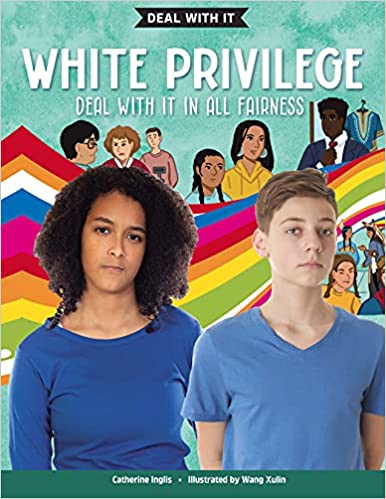White Privilege: Deal with It in All Fairness
Genre: MG | nonfiction | racism | YA

Author: Catherine Inglis
Publisher: James Lorimer
Genre: nonfiction, racism, MG/YA
For some kids, ways they can help eliminate racial injustice might be hard to see. After all, they are taught that people in society are all equal under the law. So why then does racial conflict still exist? And what can they as individuals do about it right now? One way is for white children to understand the unearned advantages they were born with based solely on the colour of their skin. This concept is called white privilege and this book will help children of all races understand it, see how it affects them and find ways to speak out and take real action against it.
White Privilege: Deal with It in All Fairness provides scenarios, quizzes and Q&As that develop readers’ understanding of the subject using situations that are realistic and that easily relate to their everyday lives. The topic is approached from three points of view: those who are “privileged,” those who identify as “racialized” and those who want to be allies.
Catherine Inglis and Wang Xulin’s non-fiction book for middle-grade and younger teen readers introduces and explores the concept of white privilege. This is part of a larger “Deal with It” series published by Lorimer.
Xulin’s expressive illustrations are presented in muted colours and add important non-verbal cues for readers. Subtle facial expressions and gestures communicate the feelings of the people represented and provide context for the various scenarios being considered.
The book approaches its topic from three points of view—the privileged, the racialized and the allies or witnesses. Many of the questions are posed to “you,” the reader, but because the “you” in the different sections is meant to be a different person, the publisher has put headings at the top of the page to clarify who is being addressed. This might require some explicit reminders on the part of the teacher: In one section the book is addressing those who may benefit from white privilege; in another it addresses those who might be harmed by it. In other words, some sections aren’t meant to be universally applied. The voice of the text can also feel somewhat authoritative and didactic, and there is little sense of how the author fits herself into these categories. This would be an important reason for teachers to use their own experiences of privilege and racism to open dialogue about the subject.
Occasionally, there are places where the imagined “situations” do not seem realistic, at least to this reviewer. For example, one scenario imagines a coach declaring that one white player was chosen for her “basketball smarts” while a Black player was chosen for her “athletic ability”; another imagines a teacher telling the class that those “who are newcomers to the country won’t be able to afford” to join the field trip. As someone who has played team sports and also taught for over 25 years, my experience is that a coach would never disclose to other players why one person was selected, nor have I ever heard a teacher relate affordability to a particular demographic. Examples like these do not always ring true, which they should for the book to make an impact on its intended audience. Fortunately, most of the scenarios do ring true, and even those that don’t will provide opportunities for discussion about what students themselves see in those situations.
Ultimately, this is a timely book on a topic that young people need to learn about. Few resources and opportunities for explicit teaching on white privilege exist for this age group, so this book should be a welcome addition to every school library.
- Mark David Smith
no-repeat;left top;; auto
